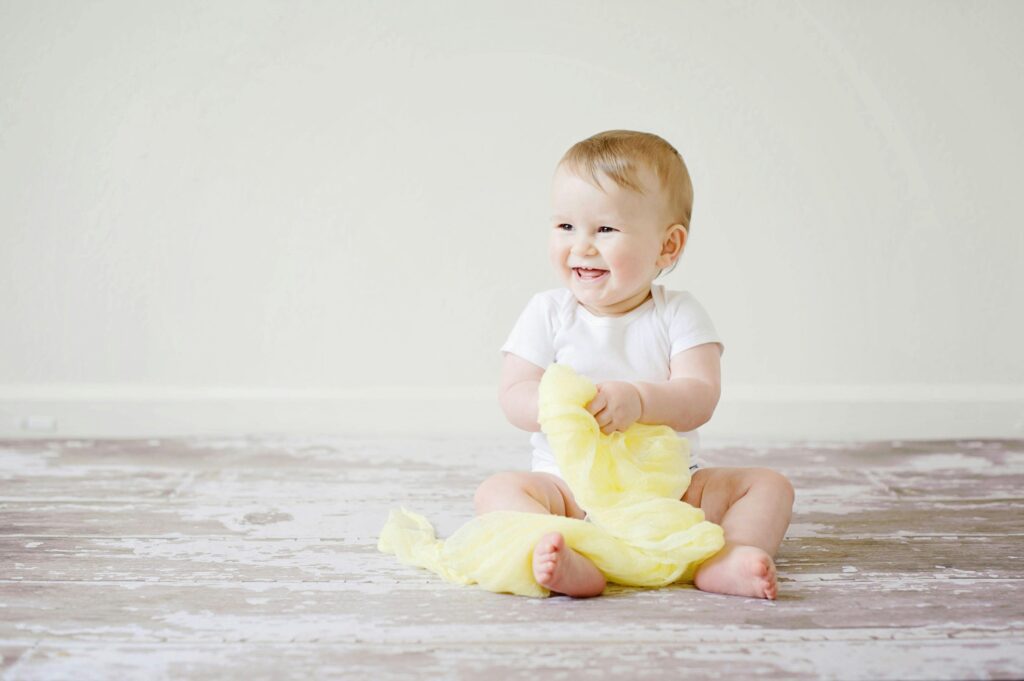Nina's Blog
How to Handle Tantrums: The Magic Reset Technique

We’ve all been there—one minute, your child is playing happily, and the next, they’re on the floor, kicking, screaming, or crying over something as simple as not getting the “right” color cup. Cue the parent panic: How did this happen, and what do I do now?
Tantrums can feel like mini emotional earthquakes shaking up your day, but guess what? They don’t have to be! Today, we’re introducing a technique to help you navigate tantrums with a little more ease: The Magic Reset. It’s a simple but effective approach to help both you and your child come out of a meltdown with your sanity (mostly) intact.
First Things First: Why Do Tantrums Happen?
Before we dive into The Magic Reset, let’s get real about why tantrums happen in the first place. It’s not because your child is being “difficult” or trying to push all your buttons (though it sure feels like it sometimes). Tantrums are just a part of how young kids learn to deal with their emotions. Their world is full of big feelings—frustration, disappointment, even hunger—and they don’t yet have the tools to express those emotions like adults do.
So, while tantrums can be loud, messy, and exhausting, they’re actually pretty normal. Your child is trying to communicate something—sometimes they’re tired, sometimes they’re upset, and sometimes, they just wanted the blue cup instead of the red one.
The Magic Reset Technique: A Step-by-Step Guide
Now, let’s talk about how to stop the tantrum spiral. Enter The Magic Reset—a method designed to calm your child (and you!) during those wild tantrum moments. Here’s how it works:
1. The Calm Pause
The first part of The Magic Reset is all about you. Yes, you! When your child is mid-tantrum, it’s easy to feel your own stress levels rising. But here’s the secret: staying calm is your superpower. If you meet their chaos with your own, the meltdown will only escalate. So, the first step is to take a breath. Literally. Inhale deeply, hold for a second, then exhale slowly.
This will help you keep your cool and send the signal to your child that you’re calm and in control—even if their emotions are all over the place.
2. Acknowledge Their Feelings (Without Giving In)
This next step is key. When your child is having a meltdown, they’re often feeling a lot of frustration. Maybe they didn’t get their way, or they’re overwhelmed by big emotions they can’t express. Acknowledging their feelings shows them that you see and understand what they’re going through.
Here’s what you don’t do: give in to the tantrum to make it stop. If they’re tantruming over wanting the blue cup, don’t rush to switch cups just to quiet the situation. Instead, say something like, “I see you’re really upset right now because you wanted the blue cup. It’s hard when we don’t get what we want.”
This step is about showing empathy without losing control of the situation.
3. The Distraction Reset
Here comes the fun part. After acknowledging your child’s feelings, gently introduce a distraction. The trick here is to shift their attention to something new without invalidating their emotions. You’re essentially “resetting” the moment.
For example, say, “Hey, why don’t we check out what’s happening outside? I think I heard a bird chirping!” Or, “Can you help me find the teddy bear? I need his help with something super important.” The goal is to create a new focus that gently redirects your child’s attention away from the meltdown.
Kids are naturally curious and easily distracted, so offering a new activity or topic can help them step out of the emotional spiral. This works especially well if the distraction is fun, playful, or taps into their sense of adventure.
4. Offer Choices to Regain Control
Sometimes tantrums happen because your child feels powerless, and offering them a small choice can help them regain a sense of control. But remember, you’re still the one setting the limits.
After the distraction, try offering a simple choice. For example: “I know you’re sad about the blue cup. We’re using the red one today, but would you like apple juice or water in it?” Or, “I understand you didn’t want to leave the park, but would you like to walk home or hop like a bunny?”
Giving them choices within your boundaries can help them feel empowered while still respecting the rules.
Want more services? Visit this LINK
5. Create a Safe Calm-Down Space
If the tantrum is still going strong, it might be time to use a calm-down space. This isn’t a punishment—this is a cozy, safe area where your child can relax and let their emotions settle. It could be a comfy chair, a corner with their favorite stuffed animals, or a “quiet time tent” filled with soft blankets and pillows.
Tell your child, “It looks like you’re feeling really big emotions right now. Why don’t we take a break in your calm-down space?” Allow them to sit in the area until they’re ready to talk or come back to the activity. It gives them a physical place to reset and regulate their emotions.


A magic makes Toddler’s smile.
When the Tantrum Passes: Reflect and Reconnect
Once the tantrum has passed and your child is calm, take a moment to reflect together. Don’t make it a big lecture—just a simple, gentle conversation. You might say, “I know it was hard when you didn’t get the blue cup today, but you did a great job calming down. Maybe next time we can talk about how we’re feeling first.”
Reconnect with hugs, smiles, or even a fun activity you can do together. This reassures your child that tantrums aren’t something to be ashamed of, and they can learn how to handle big feelings better next time.
The Magic Reset Works for You Too
The Magic Reset isn’t just about calming your child—it’s about keeping yourself grounded too. Parenting through tantrums is tough, but this method gives you both the space to handle those big emotions in a way that fosters understanding, patience, and connection.
So the next time your child melts down over the wrong cup or a denied extra cookie, remember: pause, acknowledge, distract, offer choices, and give them space to calm down. You’ve got this. Tantrums may be part of the parenting journey, but with The Magic Reset in your toolkit, they don’t have to be quite so overwhelming.
Want more Blogs? Click HERE
Comments will load here
Be the first to comment